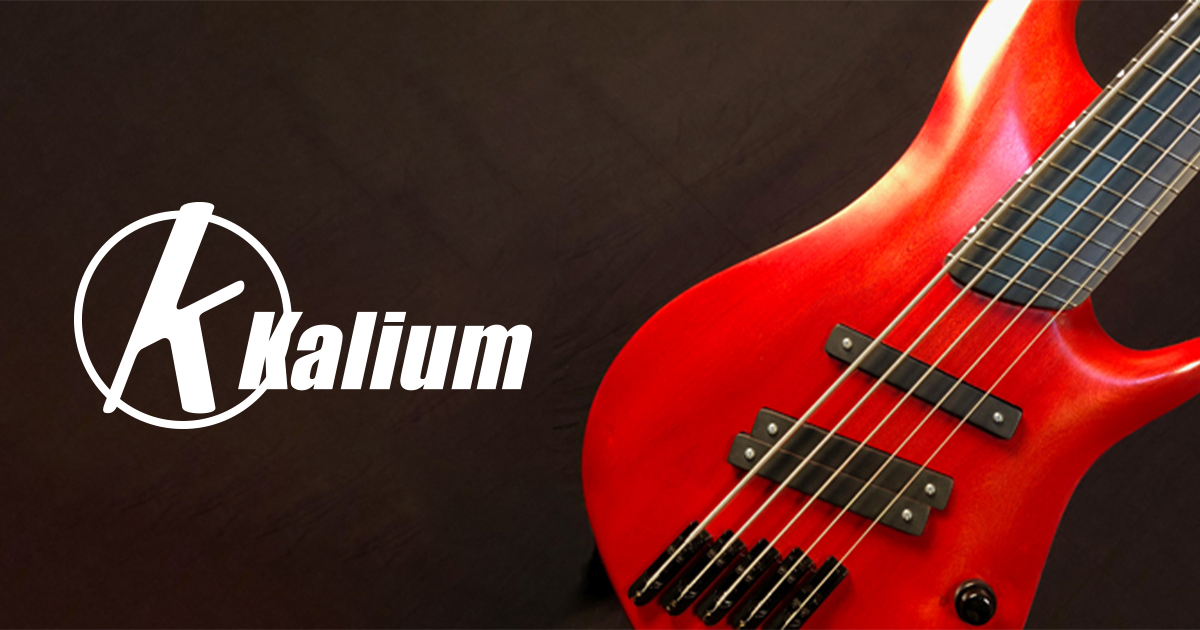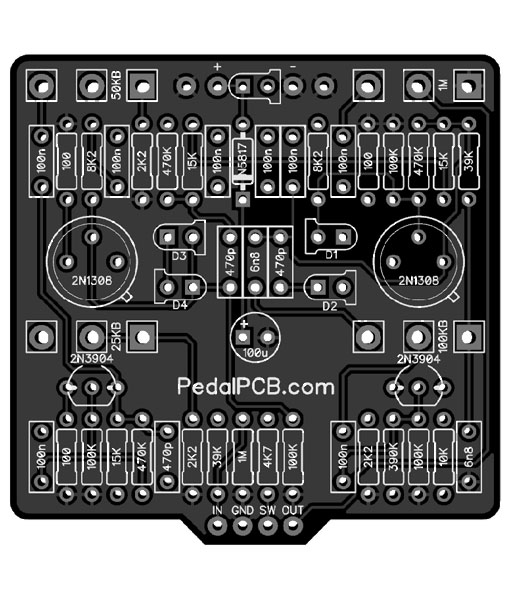Never heard of PartSim before, Giovanni, that looks cool. Looking forward to exploring it more, thanks.
Eric, A few ideas:
Build yourself a clean-blend looper pedal such as a spltnblend (it's transistor-based) or similar; with an op-amp version of a clean-blender pedal, you'll have a looper that will blend in some clean with ANY thingamabobby you plug into the loop. There may be some polarity issues — simply put: some things don't like to be blended (Digh-nah Cawmp for instance), so that's why I'd go for an op-amp version as I've seen those more often with the ability to flip the phase via a switch.
A handy pedal to have for any bass player.
Forgive me if I'm going over stuff you already know, I just remember starting out and feeling a bit overwhelmed by the amount of info I needed to digest and if that's where you're at in your journey this may help:
PedalPCB's Muff schematic that you used to build your "Bigger Muffin" has the following caps in the direct signal path: C1, C3, C4, C7, C12 & C13. The first, C1, and last, C13 are your in/out caps respectively of course.
- In/Out caps are often where a bass player can tweak any circuit for more bass (but not always).
- Coupling caps between a circuit's various stages or blocks, are another area ripe for increasing bass response. In your Bigger Muffin: C3, C4, C7 and C12 are the couplers.
It's not always as simple as bigger caps, though. The Green Russian has 100n in C1 and C13, yet may have better low-end overall than your Bigger Muffin's 10µ caps in C1 & C13 (I'm NOT familiar at all with the Bigger Muffin, don't know what it is or was based on). To stray away from the Muff circuit for a moment, take Jack Orman's MOSFET booster. Its input cap is a paltry 1n!
Yet Orman asserts that his booster is good for guitar & BASS and that increasing the input cap will do nothing. Orman's MOSFET booster does sound just fine on bass, but that didn't stop the Catalinbread top cat from enlarging the Orman circuit's input cap to 10n, and thus the Sogrado Poblano Picoso was born (with the output cap bumped from Orman's 100n to 220n as well). Sogrado aside, how can
1n possibly let enough bass through? That's where understanding how components interact with other components comes into play, and something I'm still working on learning.
So just 'cause you've got huge in/out caps doesn't mean your circuit will readily pass bass freqs through.
I'm still analysing and learning the Green Russian, and one of the key areas, I think, that helps it be such a Bass Badarse is the feedback caps (C6 & C9) and clipping caps (C5 & C8) in the two clipping stages. Note how the Russian's clipping caps are just 47n, about half of your Bigger Muffin's values. Thus your Bigger is clipping a lot more bass freqs than the Russian, and thus compressing those freqs and introducing a broader range of harmonics that swamp the fundamental bass freqs.
The Bigger's feedback C6 & C9 are a puny 47p blocking a lot of clean bass. Without looking at the BOM, care to guess how big the Russian's feedback caps are? One hundred times bigger than the Bigger's. Yeah, 470p in the Russian. Not double, not 10x, but 100x bigger. BOOM! That's the sound inside my head when I saw the Bigger's feedback caps' size.
So here are a few ways I'd mod your Bigger, and a few ways to do it:
Clipping Caps mod:
- Replace the 100n clipping caps with 47n. OR...
- Clip one end of the 100n clipping caps and solder another 100n IN SERIES to each, which will give you 50n. OR...
- Stick it all on a Switch If you want both the stock Bigger and modded values.
Feedback caps mod:
- Replace the 47p with 470p or even 560p. OR...
- Tack on a 470p to the 47p (no need to remove the 47p), adding 470p in PARALLEL with the 47p will give you 517p. OR...
- Toggle time again, but personally I think it'd be a waste of a switch (clipping above, too) and I'd go with the 517p method.
Tonestack Mod:
- Use Aion's method of having mids scooped/flat/boosted via an on-on-on toggle.
- Use Orman's or similar method of including a mids-pot.
- Try some other mids mod you may have heard of.
You can do the flat/scooped/boosted mod with an ordinary on-off-on toggle, too, but I prefer the on-on-on because the middle position of the toggle is flat. You could go with a Rotary-Sw if you want to add the option of bypassing the tone stack altogether.
Back to the couplers: You could also have a play with C3, C4, and C12 — bump from 100n to 200n by tacking on another parallel 100n or go 330n with a 220n added. Of course, C7-coupler is already 10µ.
Nota Bene! Indiscriminately bumping caps up in value can have a knock-on effect, ie upset the balance of a circuit — it doesn't always achieve the desired result and could cause the sound to become woofy, flatulent or otherwise unusable. Doesn't hurt to try, though, as you can always revert back to stock spec. See how it goes with your Bigger Muffin.
I think the tonestack mod will be the most beneficial and stop your bandmates asking "where'd the bass go?", just as others in the thread have suggested — you need mids.
If you haven't already done so, get over to Kit Rae's website and look at these pages:
Page 1
Page 2
Page 3
Page 4
Have a look at the Pharaoh, Super Collider and Musket — they're popular with a lot of bass players, and of course all the Russians. If building a Musket, I'd change the LP-1 part of the circuit to a Bass Mole/Hog and maybe mess with a few more caps to make it even more bass friendly.
For a synthish sound, that's a whole other kettle of worms. Check out TalkBass forum for synth-bass ideas.
BTW, what made you choose the Bigger Muffin?
If anybody sees I've got something wrong, or misinformed in some way — hit me with it, I'm still but a lowly Padowan — but eager to learn.




